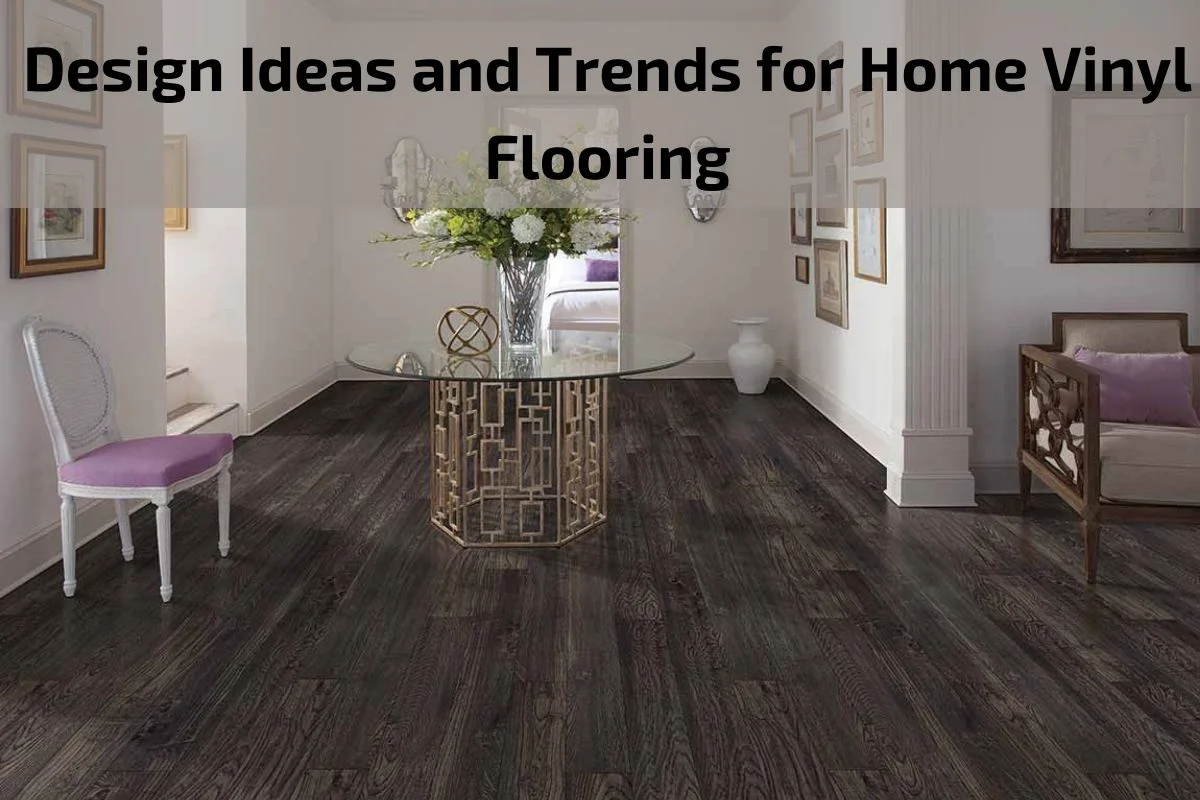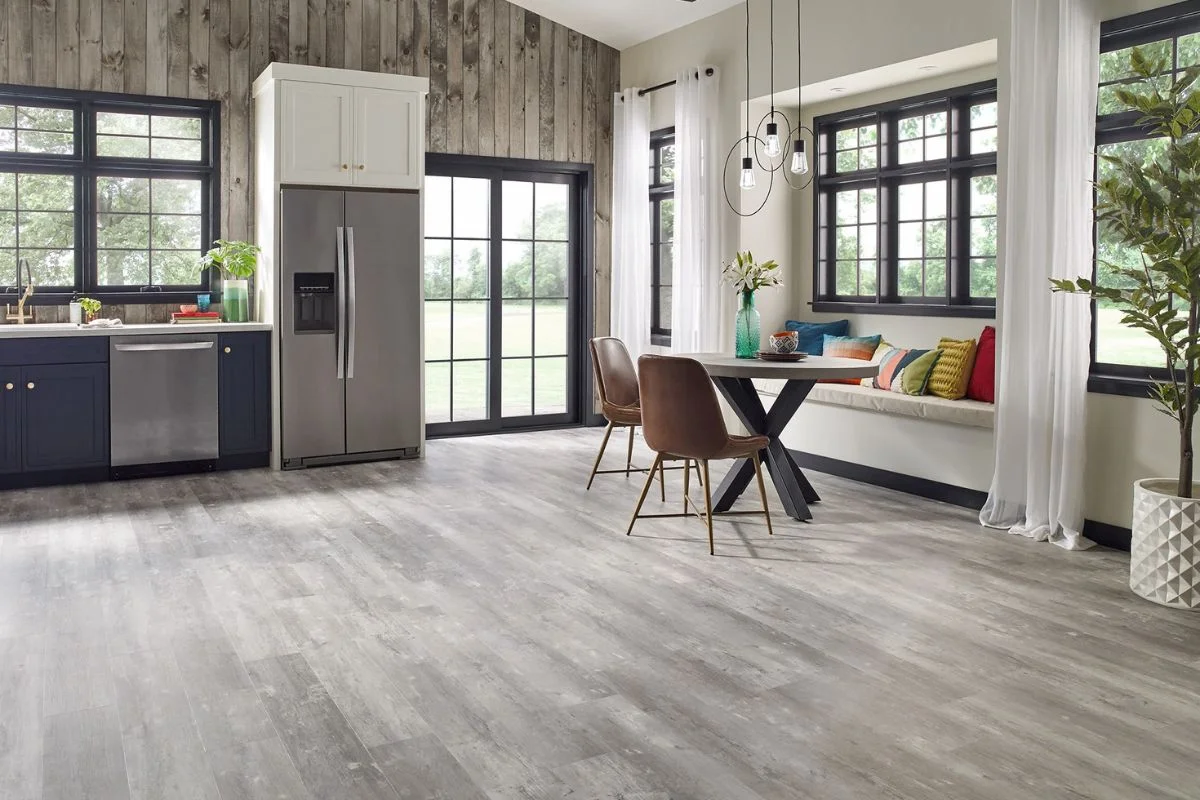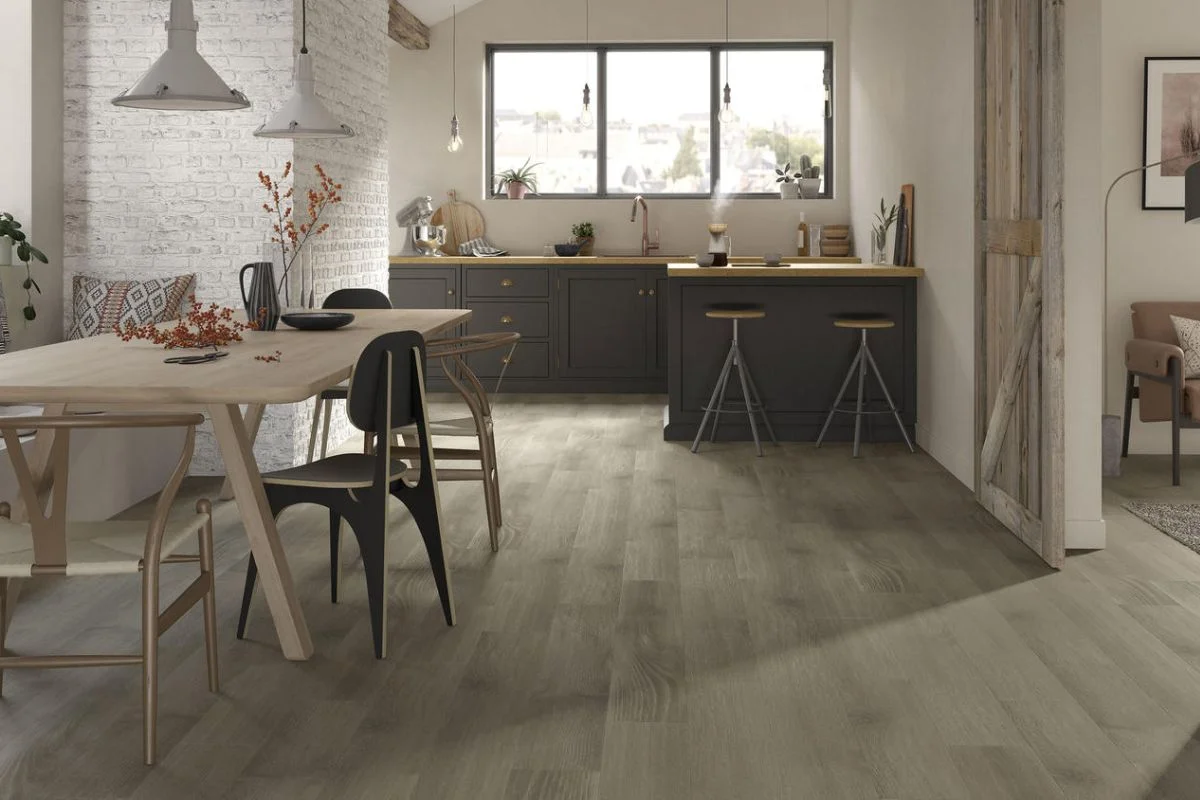
Design Ideas and Trends for Home Vinyl Flooring
Vinyl flooring has undergone a remarkable transformation in recent years, emerging as a leading choice for homeowners seeking stylish, durable, and versatile flooring solutions for their homes. With an extensive range of designs, colors, and textures, vinyl flooring offers endless possibilities to complement any home décor style, from classic to contemporary. In this article, we’ll explore the latest design ideas and trends in home vinyl flooring, from wood and tile looks to waterproof options and eco-friendly materials. Whether you’re renovating your kitchen, updating your bathroom, or refreshing your living room, vinyl flooring provides the perfect blend of practicality and aesthetic appeal to enhance every room in your home. Join us as we delve into the exciting world of home vinyl flooring and discover how it can transform your living spaces with style and sophistication.
Overview of home vinyl flooring
Vinyl flooring has emerged as a popular choice for homeowners seeking a versatile, durable, and stylish flooring option for their homes. It is a synthetic flooring material composed of polyvinyl chloride (PVC) and other additives, designed to replicate the look and feel of natural materials such as hardwood, stone, and tile. Home vinyl flooring offers a wide range of benefits, including affordability, water resistance, ease of maintenance, and design versatility.
Unlike traditional flooring materials like hardwood or ceramic tile, vinyl flooring is available in various formats, including luxury vinyl plank (LVP), luxury vinyl tile (LVT), sheet vinyl, and hybrid vinyl flooring (WPC and SPC). These options cater to different aesthetic preferences, installation methods, and performance requirements, making vinyl flooring suitable for virtually any room in the home.
With advancements in technology and manufacturing processes, vinyl flooring now features realistic textures, embossed finishes, and high-definition printing techniques that replicate the look and feel of natural materials with remarkable accuracy. This allows homeowners to achieve the desired aesthetic for their living spaces without compromising on durability or maintenance requirements.
In addition to its aesthetic appeal, home vinyl flooring is highly resilient and resistant to scratches, stains, and moisture, making it ideal for high-traffic areas, moisture-prone areas like bathrooms and kitchens, and homes with children or pets. Its easy maintenance and cleaning requirements make it a practical choice for busy households, requiring only regular sweeping, vacuuming, and occasional mopping to keep it looking its best.
Benefits of Home Vinyl Flooring
- Affordability: Home vinyl flooring is an economical option compared to natural materials like hardwood or stone. It provides homeowners with the opportunity to achieve the look they desire for their floors without breaking the bank.
- Durability: Vinyl flooring is highly durable and resistant to scratches, dents, and stains, making it an excellent choice for high-traffic areas in the home. Its tough wear layer protects against everyday wear and tear, ensuring longevity and performance.
- Water Resistance: Unlike hardwood or laminate flooring, vinyl is inherently waterproof, making it suitable for moisture-prone areas like bathrooms, kitchens, and basements. It can withstand spills, splashes, and humidity without warping or damage.
- Easy Maintenance: Home vinyl flooring is incredibly easy to clean and maintain. Regular sweeping, vacuuming, and occasional mopping with a mild detergent are all that’s needed to keep it looking its best. Its non-porous surface resists dirt and stains, making cleanup a breeze.
- Comfort Underfoot: Vinyl flooring offers a comfortable surface to walk on, with a slightly cushioned feel that reduces fatigue and impact on joints. Its warmth and resilience make it a comfortable flooring option for living spaces, bedrooms, and play areas.
- Versatility in Design: Vinyl flooring comes in a wide array of colors, patterns, and textures, allowing homeowners to achieve their desired aesthetic for any room in the home. Whether you prefer the look of hardwood, stone, or tile, there’s a vinyl option to suit your style.
- Easy Installation: Vinyl flooring is available in various formats, including peel-and-stick tiles, click-lock planks, and sheet vinyl, each offering straightforward installation options for DIY enthusiasts or professional installers. Its flexibility and ease of installation make it a practical choice for home renovations and updates.
- Sound Absorption: Some vinyl flooring products feature built-in underlayment or backing layers that help absorb sound and reduce noise transmission between floors. This makes vinyl flooring an ideal choice for multi-level homes or apartments where sound insulation is important.
- Environmentally Friendly Options: Many vinyl flooring products are made with recycled materials and eco-friendly manufacturing processes, making them a sustainable choice for environmentally conscious homeowners. Some manufacturers also offer recycling programs for used vinyl flooring, reducing waste and promoting responsible stewardship of resources.
Types of Home Vinyl Flooring
Luxury Vinyl Plank (LVP):
- Luxury vinyl plank flooring mimics the look and texture of hardwood flooring, featuring individual planks that click or lock together during installation.
- LVP comes in various sizes, styles, and colors, offering homeowners the warmth and elegance of hardwood with the durability and water resistance of vinyl.
- It’s a popular choice for living rooms, bedrooms, and other high-traffic areas where the appearance of wood flooring is desired.
Luxury Vinyl Tile (LVT):
- Luxury vinyl tile flooring resembles ceramic or porcelain tile and is available in square or rectangular tiles.
- LVT offers the durability and water resistance of vinyl with the appearance of traditional tile flooring, making it ideal for kitchens, bathrooms, and entryways.
- It comes in a wide array of colors, patterns, and finishes, including textured surfaces that mimic the look and feel of natural stone.
Sheet Vinyl Flooring:
- Sheet vinyl flooring comes in large rolls, typically 6 to 12 feet wide, and is installed in one continuous piece.
- It offers seamless coverage, making it ideal for moisture-prone areas like bathrooms and kitchens where water resistance is crucial.
- Sheet vinyl is available in a variety of designs, including realistic wood grains, stone patterns, and contemporary designs, offering versatility and customization options for homeowners.
Vinyl Composite Tile (VCT):
- Vinyl composite tile is a durable and cost-effective flooring option commonly used in commercial and high-traffic areas but also suitable for residential spaces.
- VCT is composed of colored vinyl chips combined with limestone and other filler materials, providing excellent durability and resistance to scratches and stains.
- It comes in a wide range of colors and patterns, allowing homeowners to create unique designs and patterns for their floors.
Floating Vinyl Plank Flooring:
- Floating vinyl plank flooring features planks that interlock or click together without the need for adhesive or nails.
- This type of vinyl flooring is easy to install and can be laid over existing floors, including concrete, tile, or hardwood, making it a popular choice for DIY projects.
- Floating vinyl plank flooring offers the look of hardwood with the durability and water resistance of vinyl, making it suitable for any room in the home.
Rigid Core Vinyl Flooring:
- Rigid core vinyl flooring, also known as WPC (wood plastic composite) or SPC (stone plastic composite) flooring, features a rigid core construction that provides enhanced stability and durability.
- It offers excellent water resistance and dimensional stability, making it suitable for installation in areas prone to moisture, such as bathrooms, kitchens, and basements.
- Rigid core vinyl flooring comes in a variety of styles, including wood, stone, and tile looks, offering homeowners endless design possibilities for their home interiors.
Importance of choosing the right flooring for homes
Selecting the appropriate flooring for your home is a crucial decision that can significantly impact both the aesthetics and functionality of your living space. Here’s why choosing the right flooring is important:
- Aesthetic Appeal: The flooring sets the tone for the entire interior design of your home. Whether you prefer a rustic hardwood look, the sleekness of tile, or the softness of carpet, the flooring choice contributes to the overall aesthetic appeal of your living space.
- Enhanced Comfort: The right flooring can enhance the comfort and coziness of your home. Soft and plush carpeting in bedrooms provides warmth underfoot, while hardwood or vinyl flooring in living areas offers durability and ease of maintenance. Choosing flooring materials that suit the specific needs of each room ensures a comfortable and inviting atmosphere throughout your home.
- Durability and Longevity: Investing in high-quality flooring ensures durability and longevity, reducing the need for frequent replacements or repairs. Durable flooring materials like hardwood, vinyl, and tile can withstand the demands of daily life, including foot traffic, spills, and pet activity, while maintaining their appearance and structural integrity over time.
- Ease of Maintenance: Low-maintenance flooring options simplify cleaning routines and upkeep, saving you time and effort in the long run. Flooring materials such as vinyl, laminate, and tile are easy to clean and resistant to stains, making them ideal choices for busy households and high-traffic areas.
- Health and Safety: The flooring material you choose can impact indoor air quality and contribute to a healthier home environment. Opting for hypoallergenic flooring options like hardwood, bamboo, or cork reduces the accumulation of dust, allergens, and VOCs (volatile organic compounds) in your home. Additionally, selecting slip-resistant flooring for wet areas like bathrooms and kitchens enhances safety and prevents accidents.
- Property Value: The right flooring can add value to your home and enhance its marketability. High-quality flooring materials and professional installation increase the resale value of your property and attract potential buyers. Well-maintained flooring that complements the overall design aesthetic of your home appeals to prospective homeowners and contributes to a positive first impression.
- Energy Efficiency: Certain flooring materials, such as carpeting and cork, provide insulation properties that help regulate indoor temperature and improve energy efficiency. By reducing heat loss and minimizing thermal transfer, energy-efficient flooring options contribute to lower heating and cooling costs, creating a more sustainable and eco-friendly home environment.
Maintenance and Care Tips home vinyl flooring
Proper maintenance and care are essential for preserving the beauty and longevity of your home vinyl flooring. Here are some valuable tips to help you maintain and care for your vinyl flooring:
- Regular Cleaning: Establish a routine cleaning schedule to remove dirt, dust, and debris from your vinyl flooring. Sweep or vacuum the floor regularly using a soft-bristle broom or a vacuum cleaner with a brush attachment to prevent scratches and surface damage.
- Gentle Mopping: Periodically mop the vinyl flooring with a damp mop and a mild cleaning solution. Avoid using abrasive cleaners, harsh chemicals, or excessive water, as they can damage the flooring and strip away the protective finish. Instead, opt for pH-neutral cleaning products specifically formulated for vinyl flooring.
- Immediate Spill Cleanup: Promptly clean up spills and liquid messes to prevent staining and damage to the vinyl flooring. Use a soft cloth or paper towel to blot up the spill, working from the outer edges toward the center to avoid spreading the liquid. Avoid allowing spills to sit on the floor for an extended period, as they can seep into the seams and cause discoloration.
- Avoid Sharp Objects: Prevent scratches, dents, and gouges on your vinyl flooring by placing felt pads or furniture glides under heavy furniture legs and sharp objects. Avoid dragging or sliding heavy furniture across the floor, as it can leave permanent marks and damage the surface.
- Use Entrance Mats: Place entrance mats or rugs at entryways and high-traffic areas to trap dirt, grit, and moisture from shoes before they reach the vinyl flooring. Mats with non-staining backings help prevent discoloration and protect the flooring from abrasion caused by foot traffic.
- Protective Furniture Pads: Attach protective furniture pads or coasters to the bottom of chairs, tables, and other furniture to prevent scratches and indentations on the vinyl flooring. Replace the pads regularly to maintain effective protection and prevent damage to the floor surface.
- Avoid Rubber Backed Mats: Refrain from using rubber-backed mats or rugs on vinyl flooring, as they can discolor the surface and leave stains over time. Opt for non-staining, non-abrasive mats made of natural materials like cotton or synthetic fibers designed for use on vinyl flooring.
- Regular Inspections: Periodically inspect the vinyl flooring for signs of wear, damage, or loose seams. Pay attention to areas prone to heavy foot traffic, such as entryways, hallways, and kitchen areas. Address any issues promptly to prevent further damage and maintain the integrity of the flooring.
- Avoid Harsh Chemicals: Avoid using abrasive cleaners, ammonia-based products, wax-based polishes, and solvent-based cleaners on vinyl flooring, as they can cause discoloration, dullness, or damage to the surface. Stick to gentle cleaning solutions recommended by the flooring manufacturer to preserve the finish and appearance of the vinyl flooring.
- Prevent Sun Damage: Minimize direct sunlight exposure to the vinyl flooring by using curtains, blinds, or UV-resistant window treatments to prevent fading and discoloration. Consider installing window films or tinted glass to filter harmful UV rays and protect the flooring from sun damage over time.
Conclusion
In conclusion, home vinyl flooring offers a versatile, durable, and stylish solution for homeowners seeking high-quality flooring options. From its numerous benefits, including affordability, water resistance, and easy maintenance, to the wide array of design options available, vinyl flooring has become a popular choice for modern homes.




0 comments